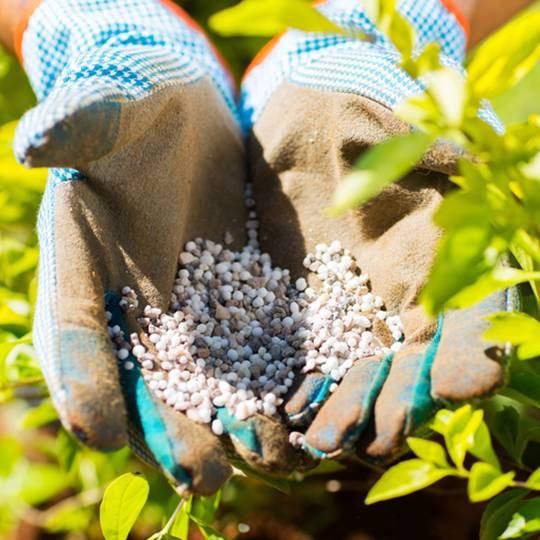4 Fall Fertilizing Mistakes to Avoid
Posted
September 22, 2016

Late fall is a perfect time to fertilize and nourish your plants’ roots. You’ll be giving them a solid foundation of nutrients to fuel their growth next spring. But please, don’t make one of these classic fall fertilizing mistakes. We’ve heard about them too often!
Fall fertilizing mistake #1: Early fall and late fall – isn’t it all the same?
No, if you fertilize too early in the fall, when temperatures are still hot and plants are still actively growing, the chemicals could damage tender new foliage. Be patient and wait until late fall. By then, your deciduous trees and shrubs have lost their foliage for the year, and they are focusing their energy not on new growth but on absorbing nutrients through the soil. Any extra nutrients you supply them will become stored in the roots and thus available to them for new growth come spring.
Fall fertilizing mistake #2: Grass, shrubs and trees all like the same fertilizer.
First, it’s important to know that fertilizers follow a formula. It’s represented by three numbers, such as 5-15-5. The first number stands for nitrogen, which promotes lawn blade and foliage growth. The second number represents phosphorus, which helps root growth. The third is potassium, which promotes cell function and absorption of trace elements. (The second, phosphorus, is usually most prominent in fall fertilizing.)
Grass, plants, shrubs and trees each have different needs. For example, if you want to strengthen your plants and ensure more flowering in the year ahead, scatter a “0-20-0” super phosphate fertilizer around them this fall, and gently mix that into the soil. For shrubs and trees, we recommend applying one to three pounds of slow-release nitrogen per 1,000 square feet of bed and then cultivating lightly.
Fall fertilizing mistake #3: Fertilizer can and should be added, always.
Most plants benefit from fertilizer to grow, bloom and flourish. Of course, there are always exceptions. For instance, the nasturtium is prettiest when left alone, without extra fertilizer. Coneflower and other prairie wildflowers also seem stronger with less fertilizer. And succulent plants such as moss roses and sedums need very little fertilizer. Your best bet is to consider the type of plants you have and treat them accordingly.
Fall fertilizing mistake #4: More is better.
Nothing could be further from the truth. With all plants, fertilizing too often or too much may result in excessive growth that is weak and susceptible to problems. Over-fertilized plants are more easily stressed. For perennial plants, heavy fertilization weakens their root system, making them less hardy during the winter. Excess nutrients also can contaminate the soil and the environment. Follow the directions on the package for application rates, or consult with an Elite Tree Care expert for guidance at 610-935-2279.
Need help with fall fertilizing?
If your plants and trees aren’t growing or blooming as much as you think they ought to, or you just want to ensure a healthy, long future for them, talk with the experts at Elite Tree Care. Our team can provide fertilization services that are safe, effective, and just right for your landscape. Call Elite today at 610-935-2279 a free consultation.